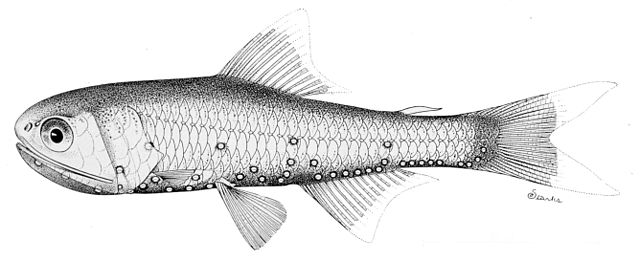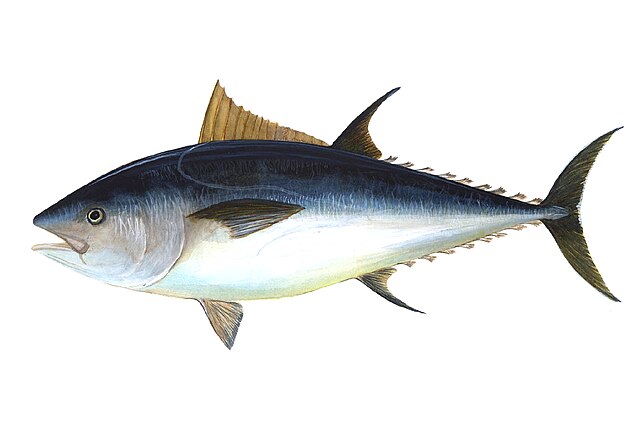Lanternfish are small mesopelagic fish of the large family Myctophidae. One of two families in the order Myctophiformes, the Myctophidae are represented by 246 species in 33 genera, and are found in oceans worldwide. Lanternfishes are aptly named after their conspicuous use of bioluminescence. Their sister family, the Neoscopelidae, are much fewer in number but superficially very similar; at least one neoscopelid shares the common name "lanternfish": the large-scaled lantern fish, Neoscopelus macrolepidotus.
Lanternfish
Lanternfish use ventrolateral (belly) photophores as counterillumination to camouflage their silhouette when viewed from below.
Pelagic fish live in the pelagic zone of ocean or lake waters—being neither close to the bottom nor near the shore—in contrast with demersal fish that live on or near the bottom, and reef fish that are associated with coral reefs.
A school of large pelagic predator fish (bluefin trevally) sizing up a school of small pelagic prey fish (anchovies)
Large epipelagic predator fish, such as this Atlantic bluefin tuna, have a deeply forked tail and a smooth body shaped like a spindle tapered at both ends and countershaded with silvery colours.
Drifting Sargassum seaweed provides food and shelter for small epipelagic fish. The small round spheres are floats filled with carbon dioxide which provide buoyancy to the algae.
Great barracuda accompanied by a school of jacks






